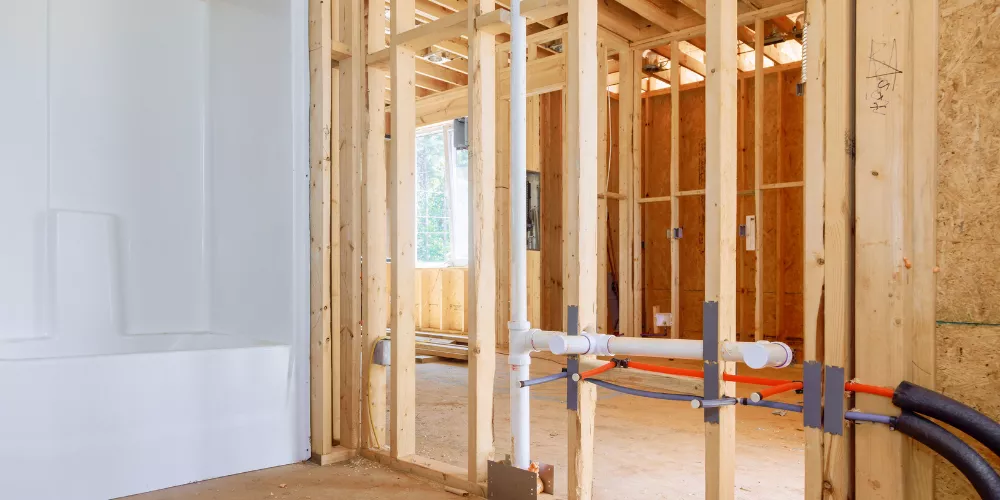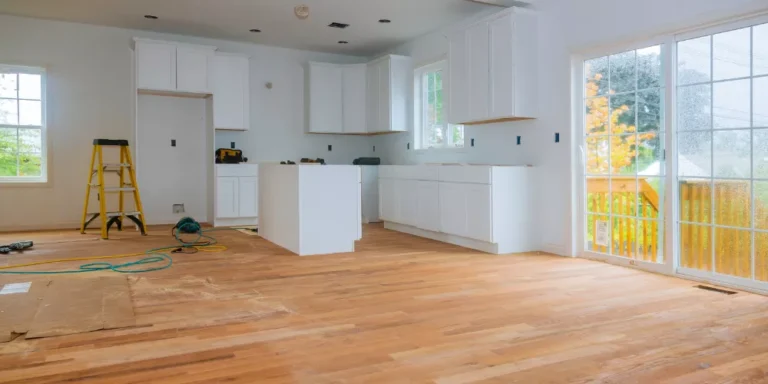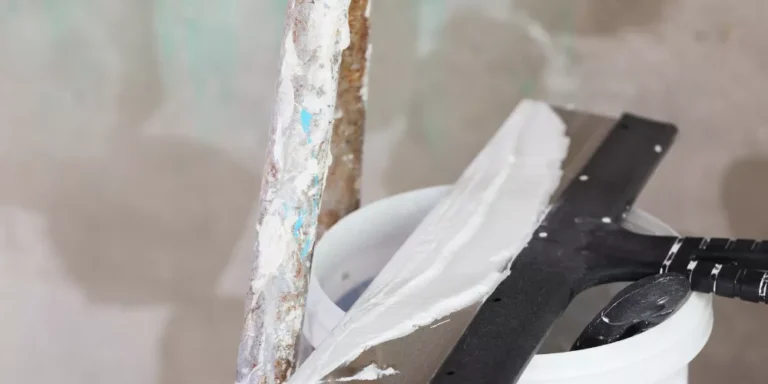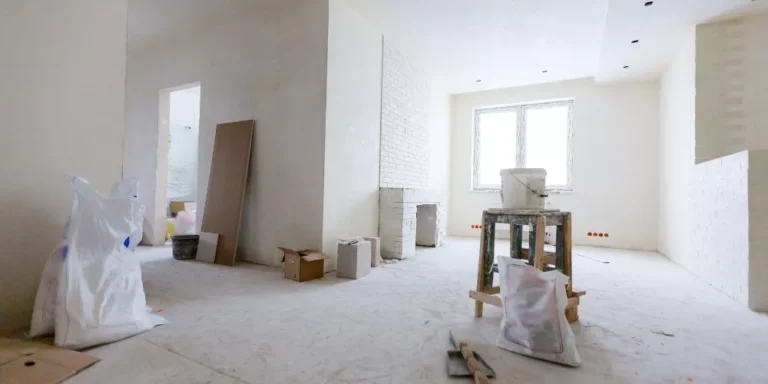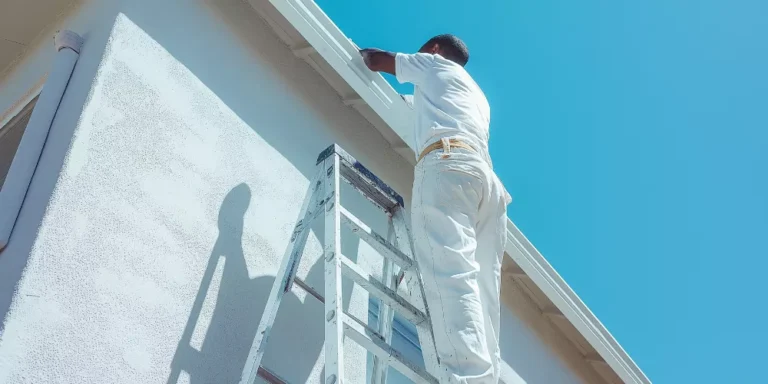What are the signs of water damage behind drywall
Water damage behind drywall is a common problem in homes across the USA. It often goes unnoticed until it becomes severe, leading to costly repairs and health risks. Moisture can come from leaks in plumbing, roofs, windows, or even condensation in poorly ventilated areas. Drywall absorbs water, which can weaken the walls, create mold, and cause structural damage over time. Early detection is crucial to prevent long-term issues and preserve the integrity of your home. Water damage can also reduce indoor air quality and trigger allergic reactions or respiratory problems. Homeowners may not always see visible signs immediately, so understanding subtle indicators is important. Dark spots, soft areas, and unusual odors often signal hidden problems. Ignoring water damage can lead to warped walls, peeling paint, and sagging ceilings. Even small leaks can create major problems if left untreated. Detecting water damage early allows homeowners to address the source and repair affected areas. Professionals in the USA often recommend routine inspections, especially in bathrooms, kitchens, basements, and attics. Timely repairs prevent more extensive structural damage and reduce overall repair costs. Knowledge of warning signs helps homeowners take proactive measures. Moisture meters and infrared cameras can aid in identifying hidden water damage. Addressing the issue quickly also prevents mold growth, which thrives in damp environments. Repairing water damage restores the home’s safety, appearance, and value. Understanding the signs behind drywall ensures a healthier and safer living environment. Proper maintenance and awareness reduce the risk of sudden wall failures or extensive renovations.
What are the signs of water damage behind drywall
Hidden water damage behind drywall can compromise a home’s structure and health. Early detection requires careful observation of both visible and subtle signs. Here are key indicators and details on how to recognize them.
1. Discoloration on Walls
One of the first signs is discoloration on painted or wallpapered walls. Water often leaves yellow, brown, or darker stains. These stains may appear in irregular shapes or streaks. They often start small but grow over time as moisture spreads. Look for subtle differences in paint color. Sometimes stains appear behind furniture or in corners. Water stains can be circular or have a halo effect. Discoloration often indicates chronic leaks rather than sudden flooding. Check behind appliances, under sinks, and near plumbing fixtures. Compare walls in different rooms for unusual patterns. Faded or damp spots may also show temporary color changes. Inspecting walls regularly helps catch early damage. Paint bubbling or peeling often accompanies discoloration. Even small stains should be investigated to prevent mold growth. Discoloration is a clear signal that moisture has penetrated the drywall. Patterns may indicate the source, such as a pipe or roof leak. Documenting changes over time helps track the progression. Early detection through discoloration allows for targeted repairs.
2. Soft or Spongy Drywall
Soft spots in drywall indicate moisture absorption. Press lightly with your fingers to detect sagging or sponginess. Water weakens drywall fibers, making it less rigid. These areas may feel soft even if paint appears normal. Soft drywall often appears near plumbing, windows, or exterior walls. Over time, pressure may cause cracks or crumbling. Ceiling spots may sag, creating bulges or uneven surfaces. Water pooling behind drywall can lead to localized collapse. Test multiple areas to determine the extent of damage. Even small soft areas indicate a need for inspection. Avoid excessive pressure, which can worsen damage. Soft drywall often correlates with leaks from pipes, roofs, or condensation. Addressing soft spots early prevents wall replacement costs. Check behind baseboards or crown molding for hidden softness. Use a small tool to probe carefully in inconspicuous areas. Multiple soft spots may indicate widespread water intrusion. Softness combined with discoloration strongly suggests water damage. Professionals may use moisture meters to confirm. Early identification allows for targeted repairs and prevents further weakening.
3. Peeling or Bubbling Paint
Paint that peels, bubbles, or cracks may signal moisture trapped behind drywall. Water creates pressure between the wall surface and drywall, lifting paint layers. Bubbling paint often occurs in small patches at first. Areas near sinks, bathtubs, or plumbing are especially prone. Peeling can spread as moisture persists. Wallpaper may also peel or loosen under similar conditions. Observe paint texture for unusual swelling or wrinkling. Bubbling combined with discoloration reinforces the likelihood of water damage. Moisture behind drywall reduces adhesion, causing paint to fail. Early signs may be subtle but worsen quickly if ignored. Inspect walls after heavy rain or plumbing use. Check ceilings and corners, where leaks accumulate. Small bubbles can hide larger problems behind the surface. Peeling paint is often accompanied by a musty odor or soft spots. Documenting changes over time helps determine the severity. Prompt repairs prevent mold and structural compromise. Avoid painting over damaged areas without addressing the moisture source. Professional assessment may be necessary for extensive damage.
4. Mold or Mildew Growth
Mold and mildew thrive in damp areas behind drywall. Visible black, green, or gray patches indicate prolonged water exposure. Musty or earthy odors often accompany hidden mold. Mold can appear along seams, corners, or near plumbing. It can spread rapidly in warm, humid conditions. Mold growth may cause respiratory irritation or allergic reactions. Inspect around sinks, bathrooms, basements, and kitchens. Even small colonies can indicate hidden water behind walls. Moisture meters can confirm damp conditions. Mold may appear as fuzzy or slimy patches. Address mold promptly to prevent health hazards. Protective equipment is recommended during inspection or cleaning. Persistent mold signals ongoing leaks or poor ventilation. Check for mold behind furniture or appliances. Remediation may involve removing affected drywall or treating surfaces. Long-term solutions include fixing the source and drying the area. Mold indicates a serious water problem that cannot be ignored.
5. Warped or Buckling Walls
Water weakens drywall and framing, causing warping or buckling. Warped walls appear uneven or wavy. Buckling occurs when drywall swells and lifts from studs. Ceilings may sag if water accumulates above. Warping is often gradual and hard to notice at first. Look for subtle shifts in flat surfaces or misaligned trim. It often occurs near leaks from roofs or plumbing. Walls may creak or pop under pressure. Warped drywall may separate from baseboards or crown molding. Severe buckling may require partial or full wall replacement. Early detection prevents structural damage. Compare wall alignment across rooms. Warping often coincides with discoloration, soft spots, or paint damage. Moisture behind walls causes expansion and contraction. Fixing the source prevents further deformation. Use a level to identify uneven sections. Warped areas often indicate chronic water exposure. Corrective measures include drying, repair, or replacement.
6. Unusual Odors
Musty, damp, or earthy smells often indicate hidden water behind drywall. Odors may be stronger in enclosed areas. Even if visible damage is minor, persistent odors suggest moisture buildup. Bathrooms, kitchens, basements, and laundry rooms are common sources. Odors often accompany mold or mildew growth. Smell detection is a simple early warning method. Regularly check areas that are less frequently used. Odors can intensify after rainfall or plumbing use. Identifying the smell early helps locate the source. Persistent odor may indicate long-term water intrusion. Ventilate affected areas to reduce odor. Use fans or dehumidifiers to dry spaces. Investigate behind cabinets, under sinks, or behind appliances. Odors combined with visual signs increase the likelihood of water damage. Professional inspections may be necessary to find hidden leaks. Addressing odor early prevents further damage and health risks.
7. Stains on Ceilings
Ceiling stains often indicate roof leaks or plumbing issues. Water can travel through walls and settle on ceilings, creating discoloration. Stains are usually brown or yellow and may have a halo effect. Check during or after rain to identify active leaks. Ceilings may sag or develop small bubbles. Inspect around skylights, vents, and attic access points. Early ceiling stains can prevent larger roof or structural damage. Document the location and size of stains. Compare changes over time to determine leak severity. Stains may appear as small spots initially and expand gradually. Look for dampness by touch or using moisture meters. Addressing roof or pipe leaks prevents ongoing water intrusion. Repairing affected drywall maintains structural integrity. Stains are a clear warning sign of hidden moisture. Professional roof inspection may be necessary for extensive damage.
8. Rust or Corrosion on Metal Fixtures
Metal elements behind drywall, such as nails, screws, or plumbing, may rust due to water exposure. Rust can weaken structural supports. Leaky pipes behind walls may corrode over time. Watch for discolored or rusty nails at drywall seams. Plumbing pipes may show greenish or brown corrosion. Rust often accompanies damp or stained drywall. It may indicate prolonged moisture exposure. Check baseboards, window frames, or outlet boxes. Rust is a sign that water has been present for a long period. Address leaks promptly to prevent structural weakening. Corroded metal may need replacement during repairs. Rust often spreads if moisture continues. Inspect for hidden pipe damage. Rust combined with other signs confirms water damage behind drywall. Repairing the source prevents further corrosion and safety hazards.
9. Increased Utility Bills
Unexpectedly high water or energy bills may signal leaks behind walls. Hidden water can increase water consumption without visible signs. Heating and cooling costs may rise if moisture affects insulation. Leaks in plumbing or appliances behind drywall contribute to waste. Comparing monthly bills over time can help detect anomalies. Check for hidden leaks near sinks, toilets, or laundry areas. Early detection prevents further damage and cost escalation. High bills may accompany other visual or odor signs. Professional inspections can locate hard-to-find leaks. Addressing leaks quickly saves money and preserves home integrity. Moisture can affect HVAC efficiency if walls are damp. Routine monitoring of bills can serve as a preventive measure. Hidden water damage often correlates with unexpected expenses.
10. Cracking or Separation of Drywall
Cracks or separation between drywall panels may indicate hidden water intrusion. Water weakens joint compound and drywall edges, causing gaps. Cracks often appear around seams, corners, or near ceilings. Expansion and contraction from moisture exacerbate the problem. Check for horizontal, vertical, or stair-step cracks. Wall trim may pull away as drywall swells. Cracking often accompanies soft spots or discoloration. Monitor cracks for growth over time. Small cracks may signal the beginning of larger issues. Inspect areas near plumbing or exterior walls. Timely repair prevents extensive damage. Remove damaged sections if necessary. Use moisture meters to confirm hidden water behind the wall. Proper sealing and repair restore structural integrity. Cracks combined with other signs confirm water intrusion behind drywall.
Conclusion
Water damage behind drywall is a serious issue for homeowners in the USA. Early detection prevents structural damage, mold growth, and health risks. Signs include discoloration, soft drywall, peeling paint, and mold or mildew. Warped walls, unusual odors, and ceiling stains are also strong indicators. Rust or corrosion on metal fixtures may suggest long-term moisture exposure. Increased utility bills can point to hidden leaks. Cracks or separation of drywall indicate weakening caused by water intrusion. Identifying and addressing the source of water is critical to protect the home. Proper inspection using visual cues, moisture meters, or professional tools ensures accuracy. Repairing affected drywall, sealing leaks, and drying areas prevent further damage. Timely remediation preserves indoor air quality and structural integrity. Monitoring and maintenance reduce long-term repair costs. Regular checks in kitchens, bathrooms, basements, and attics improve early detection. Addressing water damage maintains comfort, safety, and property value. Understanding subtle warning signs empowers homeowners to act quickly. Documenting changes over time helps track progress and severity. Professional assessment may be required for complex or extensive damage. Taking preventive measures ensures a safe and healthy living environment. Homeowners benefit from a proactive approach, preventing hidden water problems from escalating. Effective water damage management extends the life of walls, ceilings, and fixtures.

